

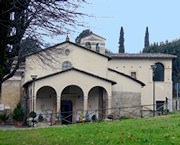
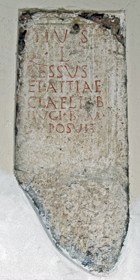
An oratory dedicated to Santa Maria della Misericordia seems to have been built here soon after the penitential Bianchi march of 1399. The part of the right wall of the present church that depict miracles related to this march (see below) was probably originally part of the oratory.
The oratory sees to have belonged to a confraternity that commissioned a fresco of the Madonna della Misericordia (ca. 1400) for its apse. In 1468, this image was seen to weep tears of blood. The oratory seems to have been in a ruinous state by this time, and Bishop Tommaso Vincenzi transferred it to a community of Hieronymites (hermits of St Jerome) in 1474. Pope Leo X confirmed this transfer in 1513.
The Hieronymites extended the oratory to the left and built a new apse. The miraculous fresco was detached before the old apse was demolished and placed on the new high altar. Only the upper part of this image survived by the time that the church was restored in 1942-3, and this fragment was stolen in 1984.
The portico was added in the 16th century.
The church became a parish church in 1598.
The Hieronymites left the city in the early 19th century. The Commune acquired the site and established the cemetery here in 1839.
Exterior
The stone wall to the right of the church seems to have formed part of an adjacent hospice in the 15th century.
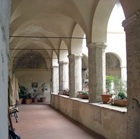
Interior
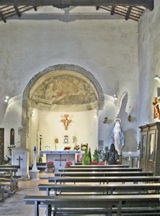
The church has a single nave.
-
✴The apse was built in the 16th century.
-
✴[The door on the right came from the earlier chapel.]
Miracles during the Bianchi March (ca. 1400)
This important fresco cycle on the upper part of the right wall, near the counter-facade, is variously attributed to the Maestro della Dormitio di Terni or the Maestro di Narni del 1409.
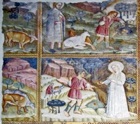
Reports of this miracle inspired a march that began in July 1399 in Genoa. Penitents dressed in white spent nine days marching to neighbouring towns and exhorting peace between warring factions in order to avert disaster. People from these neighbouring towns began similar processions and this developed into a march towards Rome for the Jubilee celebrations. The marchers seem to have reached Terni from Spoleto in September 1399.
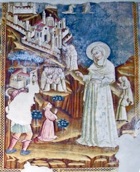
Madonna and Child with saints (15th century)
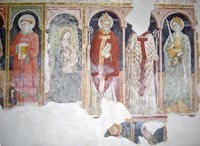
The frescoes on the lower part of the right wall depicts the Madonna and Child with:
-
✴St Leonard and a donor on the left; and
-
✴SS Valentine, Anastasius and Judith (who holds the head of Holofernes) on the right.
The fragment below the figure of St Valentine seems to have been the head of an angel: this is probably part of a scene of an angel making peace between two nobles (see below).
Frescoes on the counter-facade (15th century)
These frescoes depict:
-
✴an angel making peace between two noble men;
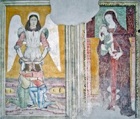
-
✴a standing figure of the Madonna and Child; and
-
✴the penitent St Jerome (1483).
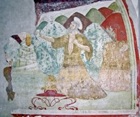
Christ in Glory (16th century)
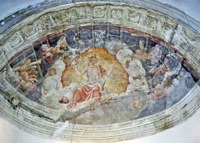
This fresco in the apse depicts Christ in Glory with the instruments of the Passion.
References:
D. Bornstein, “The Bianchi of 1399: Popular Devotion in Late Medieval Italy”, New York (1993)
Two papers in F. Santucci (Ed.), “Sulle Orme dei Bianchi dalla Liguria all'Italia Centrale”, Accademia Properziana del Subasio, Assisi (2001) are relevant to Santa Maria del Monumento:
•P. Renzi, “La Devozione dei Bianchi a Terni negli Affreschi di Santa Maria del Monumento”, pp. 273-308; and
•E. Bliersbach, "I Bianchi nell' Arte Umbro-Laziale", pp. 363-405.
Return to Monuments in Terni.
Return to the detour to Walk I.

